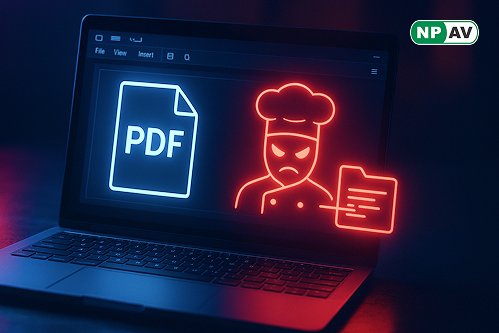Malware Alerts
-
Read moreCybercriminals use X’s AI assistant Grok to bypass ad restrictions and distribute malware through hidden links, reaching millions. Learn about the “Grokking” technique and its impact.
-
Read moreHackers are exploiting macOS security features like Keychain, TCC, SIP, and Gatekeeper to spread malware. Learn how to detect and prevent these advanced macOS attacks.
-
Read moreDiscover how Sindoor Dropper malware uses weaponized .desktop files to infect Linux systems via spear-phishing and deploys MeshAgent RAT.
-
Read moreDiscover how the TamperedChef malware uses a fake PDF editor to steal login credentials and sensitive data in a widespread 2025 cyberattack.
-
Read moreDiscover how a malicious Go module masquerading as an SSH brute-force tool exfiltrates credentials to a Telegram bot. Learn about its key features and the threat it poses.
-
Read moreZimperium’s zLabs has uncovered a new variant of the Hook Android banking trojan, featuring ransomware-style overlays and advanced credential theft tactics. Learn about its key features and technical insights.
-
Read moreAdversaries are misusing AI-powered website builders like Lovable to create malicious infrastructure for malware distribution and credential phishing. Discover the emerging threats and how organizations can protect themselves.
-
Read moreDiscover PhantomCard, a sophisticated NFC-based Trojan targeting banking customers in Brazil. Learn how this malware exploits NFC relay attacks to steal sensitive card data and facilitate unauthorized transactions.
-
Read moreDiscover how RingReaper, a sophisticated malware strain, targets Linux environments and evades traditional endpoint detection and response systems using advanced techniques. Learn about its impact on security.
-
Read moreDiscover how the new GodRAT malware, derived from the Gh0st RAT codebase, infiltrates financial institutions using malicious screensaver and program files. Learn about its evolution and impact on security.















